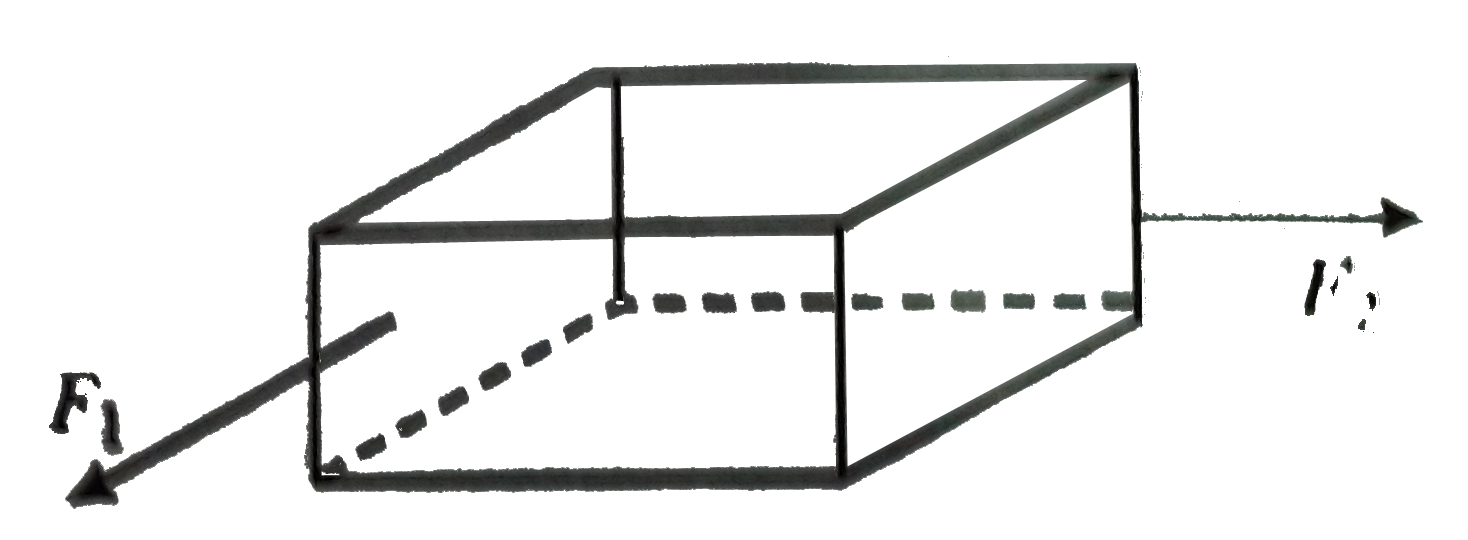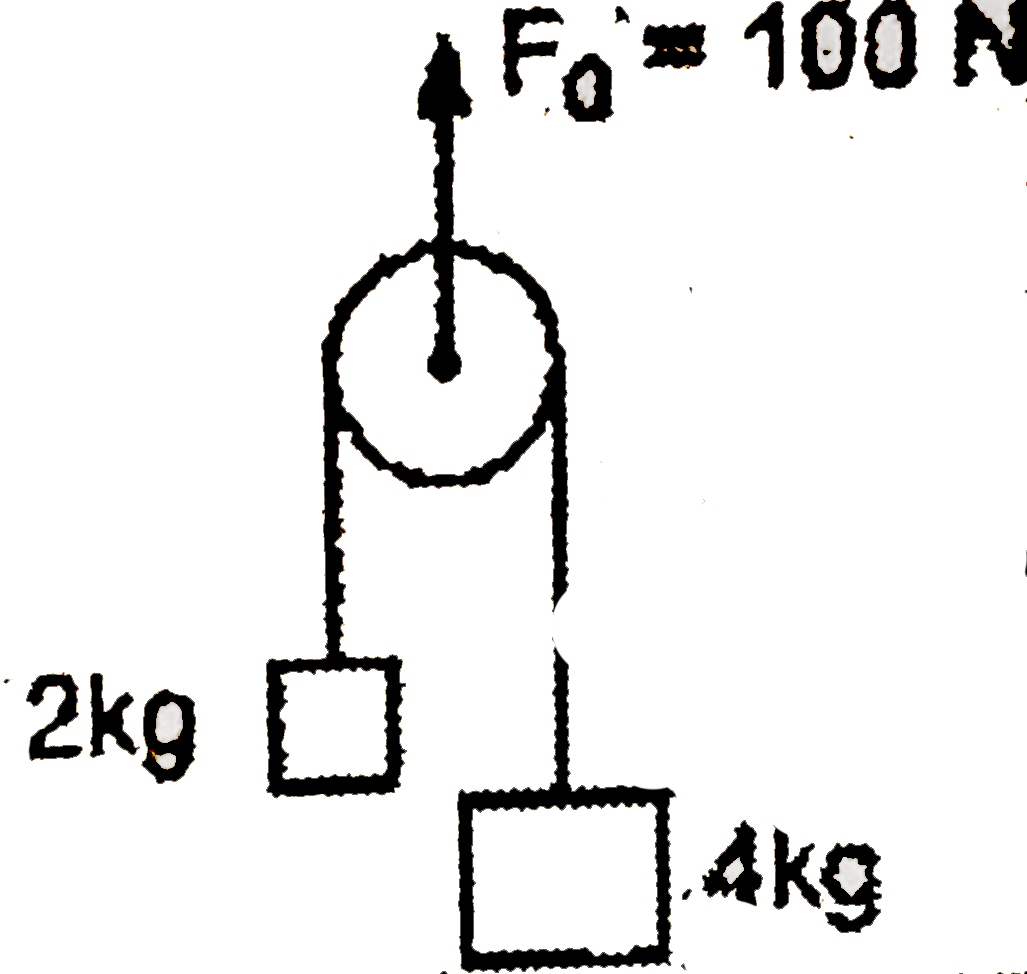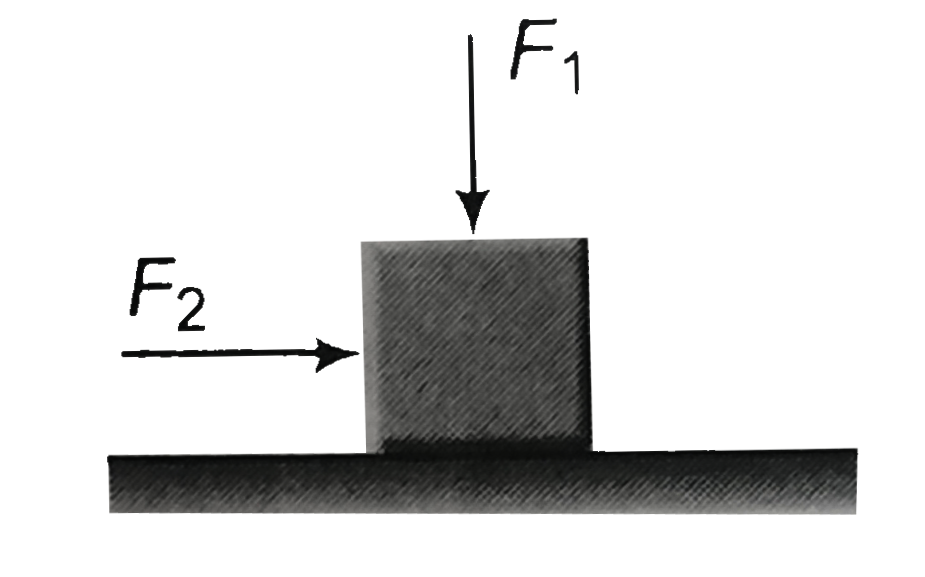Let us consider two forces F1 and F2 acting on a body of mass 2 kg as shown in the figure. F1=10N, F2=2N , what will be the acceleration?

Unbalanced external force =F1−F2
=10−2=8N

In the direction of F1.
So, F=ma
a=Fm=82=4ms−2
Topper's Solved these Questions
- LAWS OF MOTIONBook:AAKASH INSTITUTEChapter:LAWS OF MOTIONExercise:EXERCISE
Explore 70 Videos
- LAWS OF MOTIONBook:AAKASH INSTITUTEChapter:LAWS OF MOTIONExercise:Assignment (SECTION-A)
Explore 65 Videos
- LAWS OF MOTIONBook:AAKASH INSTITUTEChapter:LAWS OF MOTIONExercise:ASSIGNMENT ( SECTION -J ) Aakash Challengers Questions
Explore 5 Videos
- KINETIC THEORYBook:AAKASH INSTITUTEChapter:KINETIC THEORYExercise:EXERCISE (ASSIGNMENT) SECTION - D Assertion - Reason Type Questions
Explore 10 Videos
- MAGNETISM AND MATTER Book:AAKASH INSTITUTEChapter:MAGNETISM AND MATTER Exercise:ASSIGNMENT (SECTION D)
Explore 26 Videos
Similar Questions
Two blocks of masses m1=2kgandm2=5kg hang over a massless pulley as shown in the fig A force F0=100N acting at the axis of the pulley accelerates the system upwards Find
(a) the acceleration of each mass
(b) the tension in the string.

View SolutionA constant force F=20N acts on a block of mass 2kg which is connected to two blocks of masses m1=1.0kg and m2=2kg as shown in Calculate the accelerations produced in ball the three blocks Assume pulleys are frictionless and weightless
 .
.
View Solution
Knowledge Check
Two forces F1 and F2 are acting on a rod abc as shown in figure.
 Aif F1=F2 then τa=τb=τc ( for both forces)Bif F1=F2 then τa=τc≠τb ( for both forces)Cif F1≠F2 then τa≠τb≠τc ( for both forces)Dif F1≠F2 then τa=τc≠τb ( for both forces)
Aif F1=F2 then τa=τb=τc ( for both forces)Bif F1=F2 then τa=τc≠τb ( for both forces)Cif F1≠F2 then τa≠τb≠τc ( for both forces)Dif F1≠F2 then τa=τc≠τb ( for both forces)A block of mass 10kg is kept on a rought floor .The coefficient of friction between floor and block are μs=0.4 and μk=0.3 forcesF1=5N and F2=4N are applied on the block as shown in figure

If F1=5N and F2=aN for what maximum value of a the motion of block impenride?A√1557NB√1225NC√1664ND√875NTwo blocks of masses mi=2kg and m2=4kg hang, over a massless pulley as shown in the figure. A force F0=100N acting at the axis of the pulley accelerates the system upwards Then :
 Aacceleration of 2kg mass is 15m/s2Bacceleration of 4kg mass is 2.5m/s2Cacceleration of both masses is sameDacceleration of both the masses is upward
Aacceleration of 2kg mass is 15m/s2Bacceleration of 4kg mass is 2.5m/s2Cacceleration of both masses is sameDacceleration of both the masses is upward
Two blocks of masses m1=2kg and m2=5kg hang over a massless pulley as shown in the figure. A force F0=100N acting at the axis of the pulley accelerates the system upwards. Then :( Take g=9.8m/s2)

View SolutionTwo forces of mangitude F1 and F2 are acting on an object.The magnitude of the net force Fnet on the object will be in the range.
View SolutionTwo constant forces →F1 and →F2 acts on a body of mass 8 kg. These forces displaces the body from point P(1,−2,3) to Q(2,3,7) in 2s starting from rest. Force →F1 is of magnitude 9 N and is acting along vector (2ˆi−2ˆj+ˆk) . Work done by the force →F2 is :-
View SolutionA block is kept at rest on a rought ground as shown. Two force F1and F2 are acting on it. If we increased either of the two force F1and F2, force of friction acting on the block will increase.
By increasing F1, normal reaction from ground will increase.

View SolutionWhen forces F1 , F2 , F3 are acting on a particle of mass m such that F2 and F3 are mutually prependicular, then the particle remains stationary. If the force F1 is now rejmoved then the acceleration of the particle is
View Solution

